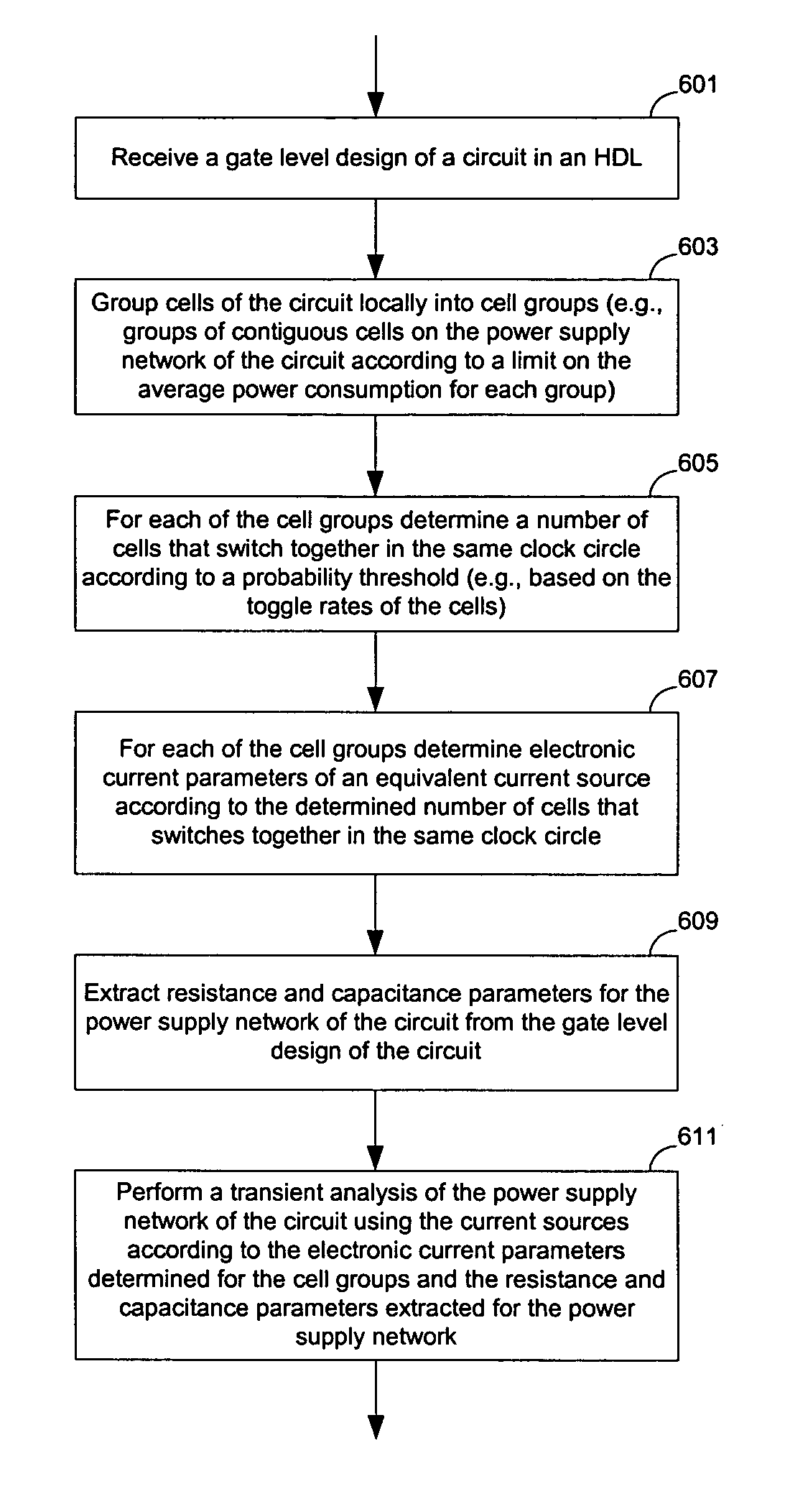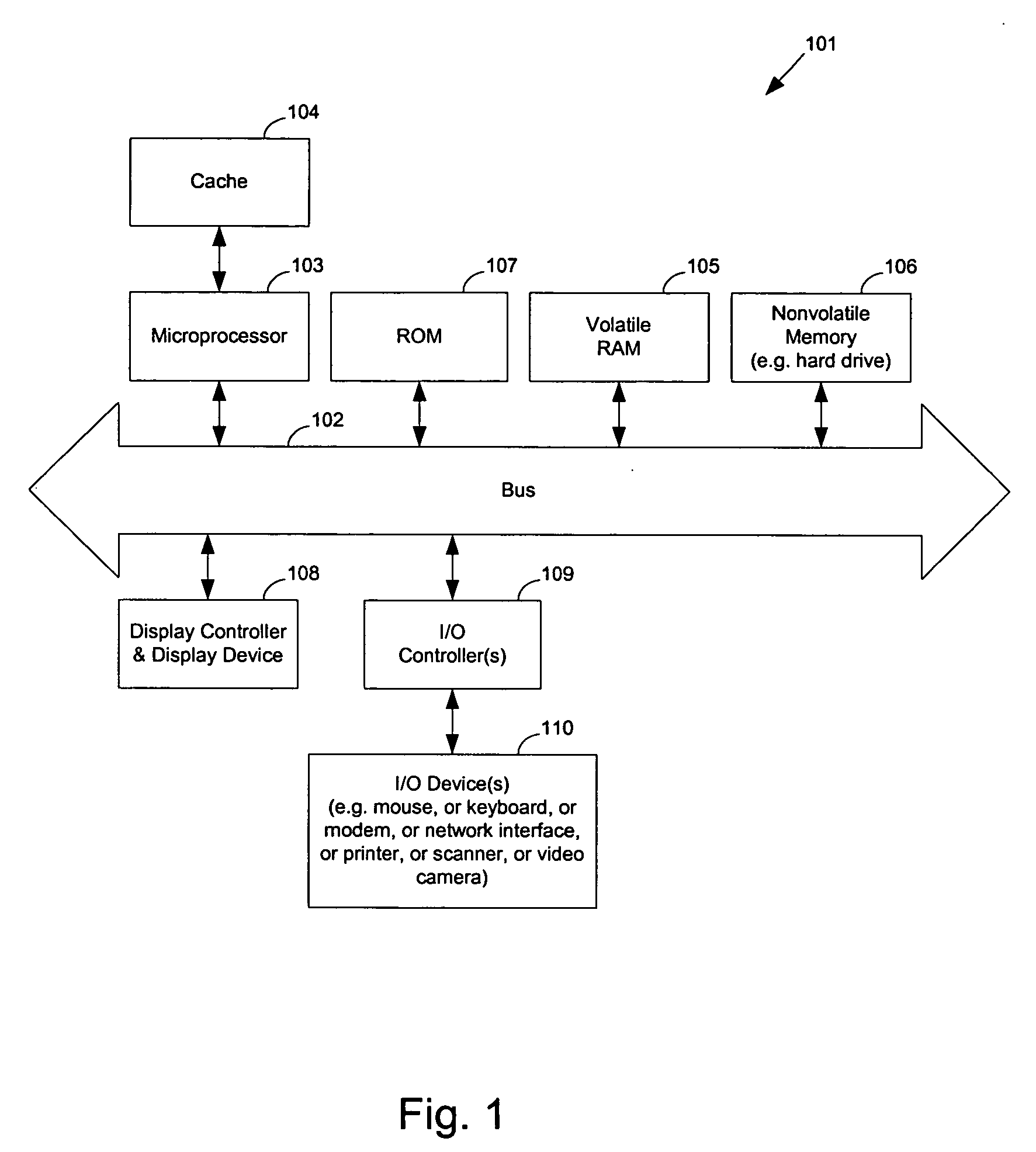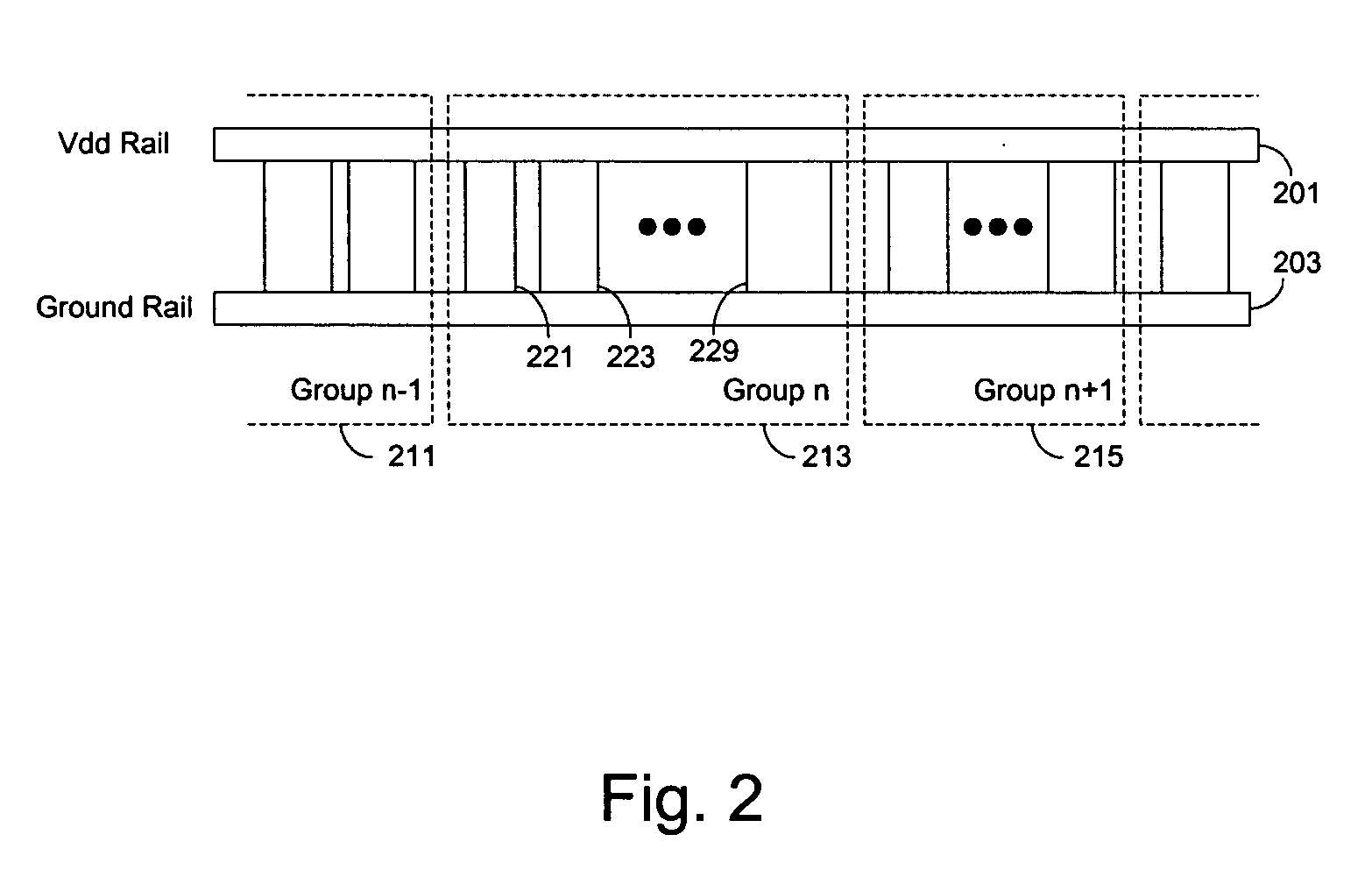[0016] In one embodiment of the present invention, the cells are grouped locally on the power supply network according to average power dissipation (e.g., so that cell groups have approximately equal power dissipation). A time varying current of each cell group is estimated using a probabilistic approach to represent the cell group so that the probability of a more severe waveform for the current of the cell group is under a certain level. For example, the cells in a group are partitioned as switching cells and non-switching cells using cell toggle rates for the determination of the time varying current. The circuit model of the power supply network includes the current sources according to the estimated time varying currents for the cell groups, the power supply wire resistance, the power supply to ground wire capacitance, well capacitance for cells with wells tied to power supply or ground wires, and the de-coupling capacitance from non-switching cells.
[0017] In one aspect of the present invention, a machine implemented method for circuit analysis includes: grouping cells of a design of a circuit into cell groups according to a threshold for power dissipation; and, determining parameters specifying a time varying current, drawn by each of the cell groups from a power supply network of the circuit, for a transient analysis of the power supply network of the circuit. In one example of an embodiment, the method further includes: performing the transient analysis of the power supply network of the circuit using the parameters specifying the time varying current determined for each of the cell groups. For example, the cells of the design may be grouped locally on the power supply network of the circuit so that cells within each of the cell groups are contiguous on the power supply network of the circuit. The threshold for power dissipation may be used to specify a limit of average power dissipation in each cell group. In one example of an embodiment, the design of the circuit includes a gate level design; and the cells of the design include technology specific standard cells for implementing the circuit on an Integrated Circuit (IC) chip. In one example of an embodiment, at least one of the parameters specifying the time varying current is determined for each of the cell groups using data indicating probabilities of state switching at cells (e.g., toggle rates of cells). In one example of an embodiment, determining the parameters specifying the time varying current includes: estimating a switching current for each cell of each of the cell groups using data specifying energy dissipation at a corresponding cell during a state transition in a clock cycle; and, determining a number of first cells that switch in a same clock cycle for each of the cell groups using the data indicating probabilities of state switching at cells; where the time varying current drawn by each of the cell groups includes at least switching currents for the number of the first cells that switch in a same clock cycle. In one example of an embodiment, the number of the first cells is determined for each of the cell groups such that a probability of more than the number of cells switching in a same clock cycle is less than a threshold value (e.g., 0.9 or 0.99). In one example of an embodiment, the number of the first cells are determined for each of the cell groups to maximize a peak value of the time varying current while the probability of more than the number of cells switching in a same clock cycle is close to the threshold value. In one example of an embodiment, the transient analysis is performed through solving a set of linear equations with a sparse matrix obtained from discretizing a set of ordinary differential equations based on current sources according to the time varying current for each of the cell groups, resistance and capacitance parameters of the power supply network, well capacitance parameters, and decoupling capacitance parameters. The decoupling capacitance parameters of second cells that are not switching are determined for each of the cell groups but excluding the number of the first cells that are switching; the resistance and capacitance parameters of the power supply network and the well capacitance parameters of wells of cells are extracted from the design of the circuit.
[0018] In one aspect of the present invention, a machine implemented method for circuit analysis includes: determining a representation of a first current, drawn by a group of cells from a power supplying network of a circuit in a clock cycle, using data indicating probabilities of state switching at the cells of the group (e.g., toggle rates of the cells), where the representation of the first current specifies the first current as a non-constant function of time in a clock cycle. In one example of an embodiment, the cells are technology specific standard cells for implementing the circuit on an Integrated Circuit (IC) chip. In one example of an embodiment, a first number is determined from the data indicating probabilities of state switching at the cells of the group such that a probability of more than the first number of cells of the group switching in a same clock cycle is about a predetermined value; and then, first cells of the first number are selected from the group to determine the representation of the first current from currents drawn by the first number of the first cells when the first cells switch together in a same clock cycle. In one example of an embodiment, a representation of a second current drawn by one of the cells of the group is determined to specify the second current as a non-constant function of time in a clock cycle in determining the representation of the first current; and the representation of the second current is determined from an amount of energy dissipation in the one of the cells during switching in state in a clock cycle. In one example of an embodiment, equivalent resistance and capacitance parameters for second cells of the group (not including any of the first cells) when the second cells do not switch are further determined. In one example of an embodiment, the group of cells is modeled using at least a current source according to the representation of the first current and the equivalent resistance and capacitance parameters. In one example of an embodiment, the group of cells is further modeled using the well capacitance parameters determined for the cells of the group. In one example of an embodiment, cells of a design of the circuit are selected into the group so that an average power dissipation of the group is at about a predetermined level.
 Login to View More
Login to View More  Login to View More
Login to View More 


